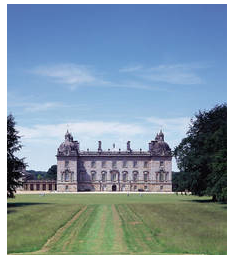Catherine the Great of Russia spent much of her rule as a sedulous and determined patron of the arts; in part to give herself authority as a ruler (having usurped her husband Peter III), but also to make Russia a key player on the international stage, both politically and in terms of the nation’s artistic aspirations. She was ruthless in her efforts to acquire the very best collections in Europe, most notably that of Pierre Crozat, as well as the body of works assembled at Houghton Hall by Sir Robert Walpole throughout his life.
In the 1799 the sale of Houghton’s collection of Old Master works was necessary in order to pay the huge debts left by Walpole (Britain’s first prime minister) on his death. Despite a hopeful appeal by John Wilkes to the House of Commons to purchase the collection for the nation’s museums, the £40,055 price tag proved too costly, and the works disappeared abroad. The Houghton Revisited exhibition recreates the 18th century Hall for the first time since the sale of the works, with over 60 paintings being returned to their original home for a 5 month exhibition.
This feat was possible due to the discovery of an original hanging plan (found in a desk drawer) detailing the location of Walpole’s works. The curators have attempted to place the paintings back in the positions they would have occupied, and have restored some of the pictures to their original gilded frames.
The exhibition occupies the rooms of the piano nobile, flowing between the central stone hall, the library, several bedrooms and dressing rooms, and a grand saloon. Walpole’s hoard was hugely impressive, ably furnishing a growing museum collection in Russia. Some of the highlights include intimate and arresting portraits by Velazquez, Rubens and Rembrandt, and a powerful composition by Charles Le Brun of Daedalus and Icarus, c.1645-6.
Carlo Maratta’s Pope Clement IX (1669) depicts a frail Pope, just weeks before his death. The work recalls papal portraits by artists of the previous century, such as the understated power of Raphael’s Pope Julius II and the translucent brushstrokes of Titian’s Pope Paul III. Yet Maratta’s pope is striking in the direct eye contact with which he engages the viewer, the sharp delineation of his features and the details of the surroundings, for such a large portrait.
The house itself and the grounds are also spectacular, particularly the breathtaking walled garden and sculpture installations such as the flaming water feature. The popularity of the exhibition has merited its extension until the end of October, and I strongly recommend a visit for whoever is able. It is so special to be able to view these works in their original context, and such a unique opportunity to see a collection that has stayed largely intact despite being transported far from it’s original home.






